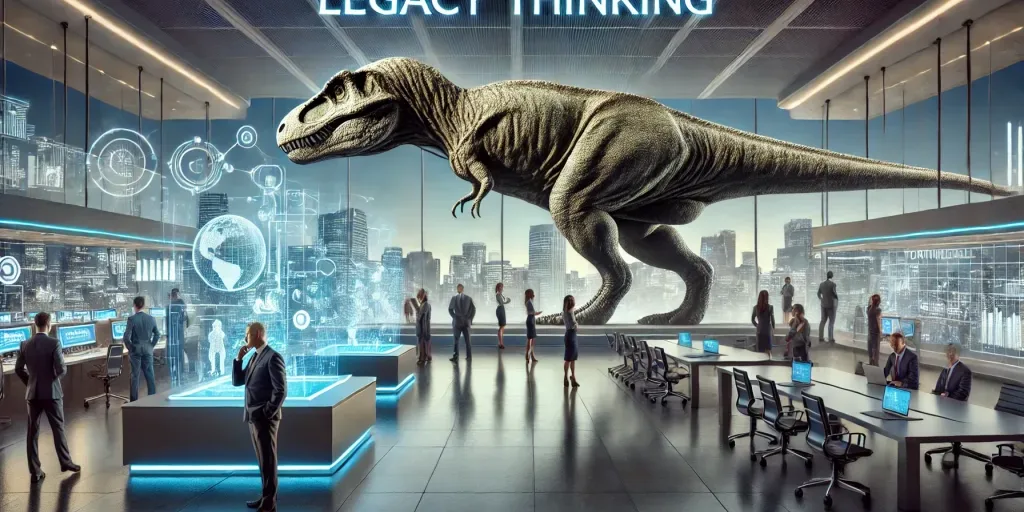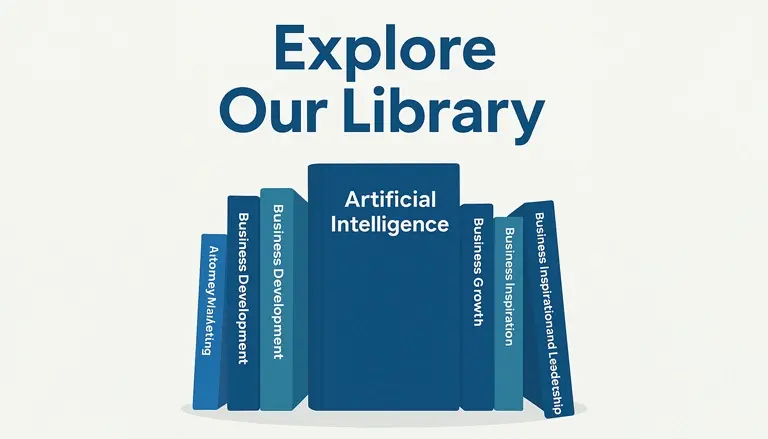

The Dinosaur Dilemma: Why Legacy Thinking Will Sink Your Business
Posted November 2, 2024 by Kevin Chern
In the wild world of business, staying still is like wearing concrete boots in quicksand it’s only a matter of time before you’re stuck, sinking, and surpassed by faster, more agile competitors. Legacy thinking, the practice of sticking with outdated methods just because they used to work, is the T-Rex of the corporate world huge, intimidating, but heading for extinction if it doesn’t evolve. So, what does it take to avoid fossilization? Let’s explore how legacy thinking can hold your business back and, more importantly, how you can trade it for forward-thinking strategies.
What Exactly is Legacy Thinking?
Legacy thinking is that We have always done it this way mindset that can sneak into organizations. It’s comforting, familiar and ultimately dangerous. Companies often resist change because established systems feel secure. But here’s the catch what worked yesterday may not work today, and certainly won’t keep you competitive tomorrow.
Why Legacy Thinking Spells Trouble
Take a moment to reflect on how many brands lost their way by holding too tightly to the past. Ever heard of Blockbuster? How about Kodak? Both were giants in their industries until they failed to adapt. As streaming services and digital cameras disrupted their markets, these companies clung to legacy thinking and the rest is history.
In today’s hyper-competitive digital landscape, businesses that fail to evolve become irrelevant fast. The comfort of old processes often gives a false sense of security. But sticking with them is like riding a horse on the highway quaint, but it won’t get you where you need to be.
Warning Signs: Are You Stuck in the Dinosaur Age?
Here’s how to tell if legacy thinking is creeping into your business:
- We’ve Always Done It This Way Mentality
Relying on outdated processes just because they’ve worked in the past can be risky. If your team never questions or updates these methods, you’re limiting your potential to grow and compete. - Reluctance to Embrace Technology
Sticking to manual workflows while competitors adopt AI, automation, or data analytics puts you at a disadvantage. Technology isn’t just a trend it’s a tool for efficiency, insight, and long-term success. - Fear of Failure
Playing it safe may feel comfortable, but avoiding risks stifles progress. If fear of mistakes is stopping you from trying new strategies, it’s time to adopt a more flexible, growth-oriented mindset. - Ignoring Industry Trends
The market evolves quickly, and failing to monitor shifts in technology or customer behavior leaves you behind. Staying proactive is essential to meet expectations and seize new opportunities before your competitors do.
Adapt or Become Extinct: The Case for Evolution
Survival today isn’t just about offering a good product it’s about evolving with the times. Take Apple, for instance. Instead of clinging to their iPod legacy, they transitioned to the iPhone, revolutionizing the way we use technology. Their secret? Blending the old with the new.
Successful companies understand that innovation is a journey, not a destination. They know when to pivot and when to double down on what works. Evolution doesn’t mean scrapping everything you know it means upgrading your playbook to meet the challenges of today’s market.
How to Escape the Dinosaur Trap A Quick Guide
Ready to leave legacy thinking behind? Here’s how you can adapt:
1. Cultivate a Learning Culture
Encourage curiosity by asking, What’s next? rather than sticking to Why change? Promote continuous learning through collaboration, training, and open discussions. A culture of curiosity drives innovation and keeps your business moving forward.
2. Invest in Future-Proof Technology
Adopt tools that not only solve today’s problems but also prepare you for future growth. Focus on automation, AI, and cloud solutions to streamline operations and scale efficiently. Technology aligned with your goals ensures long-term competitiveness.
3. Get Comfortable with Experimentation
Not every new idea will succeed, and that’s okay. The key is to learn quickly from failures and adjust your strategy. Start with small tests or pilot programs, then refine based on results to ensure continuous improvement.
4. Keep an Eye on Trends
Monitor market shifts, emerging technologies, and customer feedback to stay ahead. Proactively aligning your strategies with these trends ensures your business remains relevant and prepared for future challenges.
What Happens If You Don’t Change?
Legacy thinking isn’t just inconvenient it’s dangerous. Companies that don’t evolve face diminishing market relevance, shrinking customer bases, and missed opportunities. The risk is real those who refuse to innovate will eventually find themselves playing catch-up or worse, shutting down for good.
Don’t wait until it’s too late. Evolution is easier when it’s proactive, not reactive.
The business dashboard world is unforgiving to those who refuse to adapt. Clinging to legacy thinking might feel safe, but safety isn’t the same as success. Ask yourself: Is your business evolving, or are you coasting on old achievements? The choice is clear adapt, evolve, and thrive, or become the next chapter in a history book about companies that didn’t make the cut. It’s not just about survival; it’s about staying ahead. In the game of business, if you’re not growing, you’re going extinct.
Tags:




